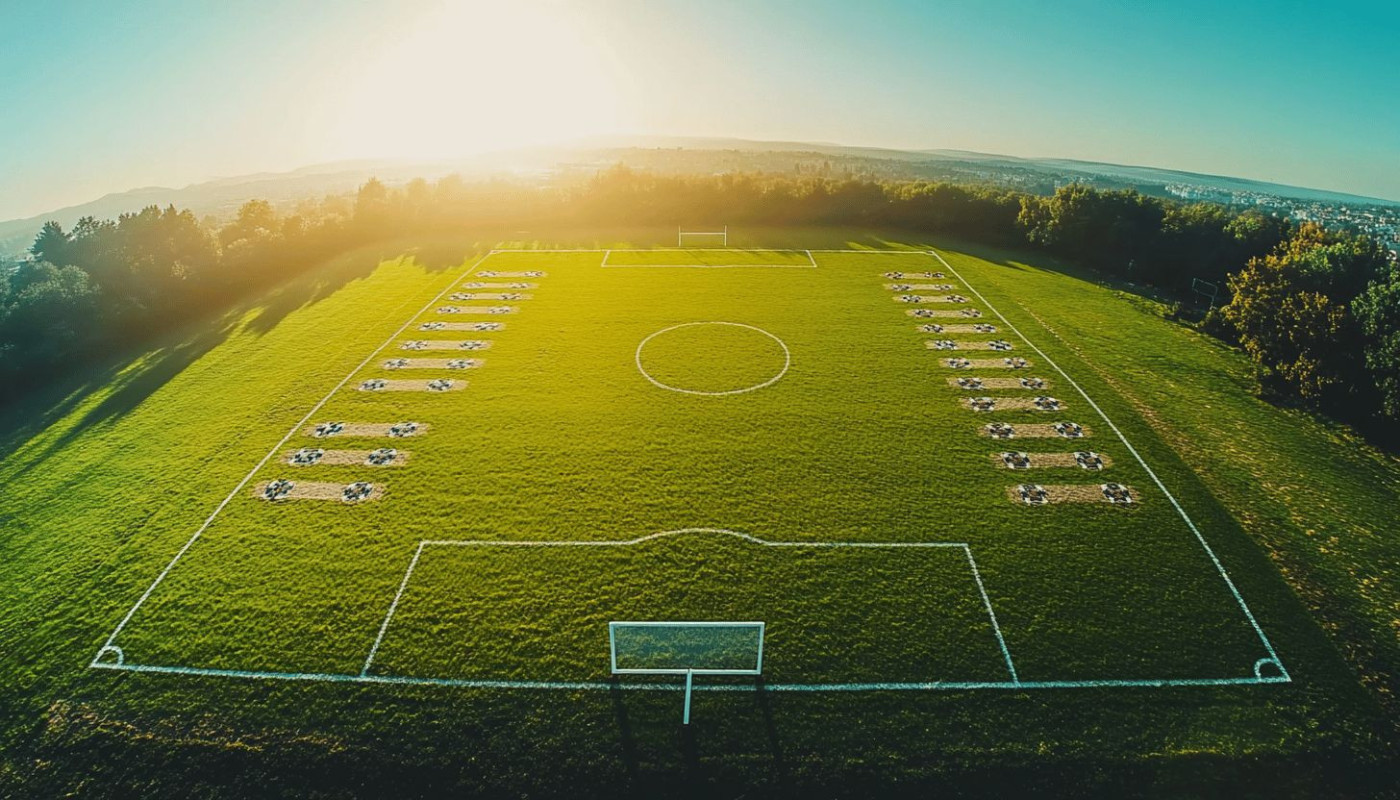Table of contents
The world of football has always been a fascinating display of strategy, adaptability, and mental sharpness. As the sport has evolved, so too has the concept of tactical intelligence, shaping the way teams and players approach every match. Delve deeper into the transformation of football tactics, where innovation and analysis combine to redefine the beautiful game. Unlock the secrets behind the minds that have changed the pitch forever—your journey into the evolution of tactical intelligence starts here.
The origins of tactical play
Early football tactics trace back to the late 19th and early 20th centuries, when the sport began shifting from a chaotic, individualistic style to a game defined by structure and collective effort. During this foundational period in football history, pioneering managers and players recognized the value of team shape, discipline, and spatial awareness, leading to the creation of the first structured football formations. The tactical evolution of the sport started with the widespread adoption of the 2-3-5 pyramid formation, which provided a basis for early game strategy by emphasizing a clear division between defenders, midfielders, and forwards. This formation allowed teams to operate with better balance between attack and defense, significantly changing how matches were approached.
As tactical intelligence in football progressed, the introduction of the WM formation in the 1920s marked a transformative moment in football formations. This system, designed to address the changes in offside laws, enhanced defensive solidity while enabling more nuanced attacking play. The WM’s influence extended far beyond its era, setting the stage for modern tactical thinking and underlining the value of adaptability in team strategy. Early managers’ emphasis on positioning and collective awareness laid the groundwork for the intricate systems seen in today’s game, making the study of early football tactics and formation development an essential aspect of understanding the sport’s ongoing tactical evolution.
The rise of analytical approaches
Football has witnessed a remarkable shift from reliance on intuition and experience toward a landscape deeply influenced by football analytics and tactical analysis. With coaching technology rapidly advancing, teams are equipped with extensive football data, enabling coaches to dissect match performances, predict opponent tactics, and optimize player roles with scientific precision. Video analysis has become a critical process, allowing coaching staff to break down every moment of play, identify patterns, and support their decisions with empirical evidence. This evolution has spurred the creation of specialized performance analysis departments within clubs, where experts collaborate closely with the head coach to provide detailed reports and real-time feedback during games. The modern emphasis on data not only enhances match preparation but also supports swift tactical adjustments as play unfolds, fundamentally changing the way the sport is approached at the highest level.
Many legendary moments in football history can now be revisited and reanalyzed through these advanced analytical techniques. For instance, the impact of iconic players and matches, such as England’s triumph in 1966 led by Bobby Charlton, can be better understood using modern football analytics to interpret their tactical significance. For those interested in the legacy of such pivotal figures, check it out to gain deeper insight into the legend’s role and lasting influence on the evolution of football intelligence.
Influence of pressing and transitions
Modern football strategies have transformed the landscape of tactical intelligence, with pressing tactics and transitional play taking center stage. The relentless pace and intensity of contemporary matches demand that teams not only react swiftly but also operate as a unified block, both defensively and offensively. Pressing tactics, particularly the high press, challenge opponents deep in their own half, seeking to disrupt buildup play and force turnovers close to goal. This requires every player to read the game, anticipate passing lanes, and coordinate movements seamlessly, making tactical awareness across all positions a non-negotiable skill.
The rise of counter-pressing, where teams immediately attempt to regain possession after losing the ball, has redefined football transitions. Instead of retreating into a defensive shape, players swarm the ball carrier, exploiting disorganization and fatigue in the opponent’s ranks. This approach leverages the chaos of possession changes, aiming to capitalize on brief windows of vulnerability. Such coordinated efforts hinge on acute spatial awareness, communication, and the collective understanding of triggers that initiate the press, all of which are now embedded in top-level tactical training.
Football transitions no longer refer solely to attacks sprung from deep defensive positions; they now encompass a spectrum of moments when possession shifts, often dictating the rhythm and outcome of entire matches. Teams build their modern football strategies around the ability to execute rapid, intelligent responses during these phases—whether launching an incisive counterattack or containing an opponent’s breakaway. In sum, the evolution of pressing and transitional tactics highlights how tactical intelligence in football has expanded far beyond rigid formations, embracing adaptability, anticipation, and collective execution as the hallmarks of elite teams.
The evolution of player roles
Tactical intelligence has been a driving force behind the changing landscape of football player roles, pushing boundaries beyond traditional formations and responsibilities. In the modern game, the rise of the hybrid role has seen players operate across multiple zones and functions, giving teams tactical flexibility that can unsettle opponents and create unpredictable dynamics. Modern footballers must master a deep understanding of various positional requirements, often acting as both defenders and attackers within the same match. This versatility is now embedded in player development, with coaches emphasizing adaptability and a comprehensive tactical education from an early age.
Hybrid positions represent a significant shift away from the era when players rigidly adhered to one role or area of the pitch. Today, tactical flexibility is not just valued, but demanded, as top teams seek individuals capable of transitioning seamlessly between defensive, midfield, and attacking duties. Player adaptability is also reflected in the way athletes read the flow of play and react dynamically to changing situations, making football more fluid and complex than ever before. As a result, the traditional concept of static positions is being replaced by a more nuanced, collective understanding of space, movement, and tactical intelligence across the entire squad.
The future of tactical intelligence
Looking ahead, the future of tactical intelligence in football promises to be shaped by rapid advancements in technology, particularly through the integration of artificial intelligence and predictive modeling. These developments in AI in football are set to revolutionize the way coaches and players approach game strategies. Predictive modeling enables teams to analyze vast quantities of match data in real time, allowing for the identification of subtle patterns and the anticipation of opponents’ moves with remarkable accuracy. This not only enhances tactical innovation but also supports more responsive, adaptive strategies during live games, providing smart coaching tools that can instantly adjust formations or tactics based on evolving match dynamics.
Football prediction systems driven by machine learning algorithms are also gaining popularity, offering insights into likely outcomes and optimal decision-making pathways. These systems help coaches refine match preparation, develop personalized training regimens, and minimize risk by simulating countless in-game scenarios. For players, this means tailored feedback and continuous development of their tactical understanding, as wearable technologies and on-field monitoring become more prevalent. The convergence of these tools ensures that future football tactics are not only more sophisticated but also deeply customized to the strengths and weaknesses of both individuals and teams.
As the digital age progresses, expect a further blurring of boundaries between human intuition and data-driven approaches. Tactical innovation will likely encompass real-time decision support systems, enabling split-second adjustments during matches that were previously unimaginable. The democratization of advanced analytics and AI in football means clubs at every level have the potential to benefit from these tools, leading to a more competitive and tactically rich sport. With each technological advancement, the landscape of football continues to evolve, pushing the limits of what is possible on and off the pitch.
Similar

Unlocking Your Potential with Sports Hypnosis

Rising Stars In Motorsport: The Journey To Top Team Rivalry

